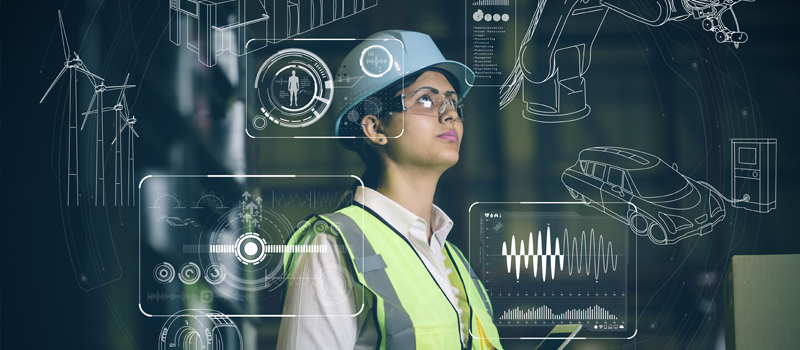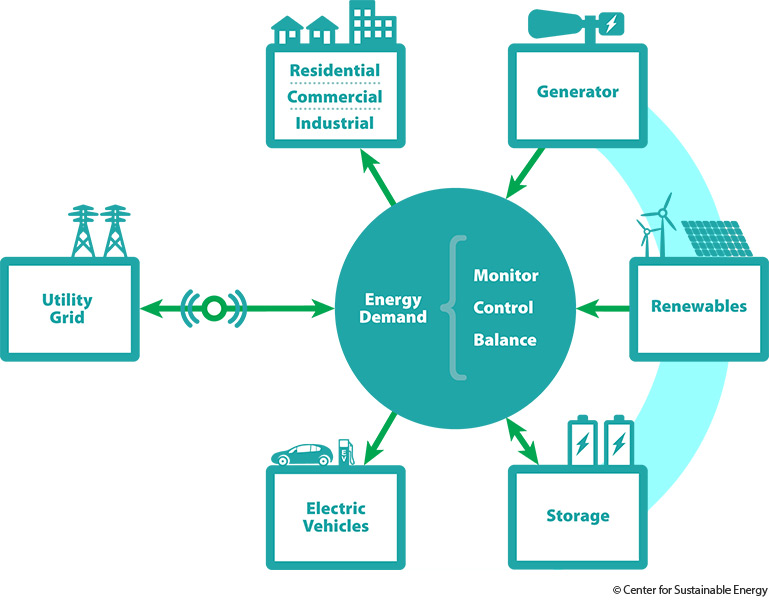 Microgrids are not a new concept. Hospitals, communities, the military, and other types of organizations have been using them for years. Though data center operators share many things in common with their more institutional brethren, such as the need for reliable power, they’ve been slow to pick up on the technology.
Microgrids are not a new concept. Hospitals, communities, the military, and other types of organizations have been using them for years. Though data center operators share many things in common with their more institutional brethren, such as the need for reliable power, they’ve been slow to pick up on the technology.
That may be about to change. In 2017, data center microgrids made 451 Research’s list of Ten Technologies That Might Change Data Centers Forever. The research firm gave the technology a disruptor score of 3.2 out of 5, suggesting that the impact of data center microgrids is coming closer and closer to being a reality. In this post, we’ll look at why microgrids and data centers are a perfect match.
What is a Microgrid?
A microgrid is a locally controlled system of interconnected energy loads (demands) and resources (supply) that is usually connected to the main grid but can be disconnected and operated in a self-contained mode. The primary energy source powering the microgrid is often a traditional fuel source such as diesel, but many data center operators are moving toward renewables as well as natural gas as a primary source of power.
While the microgrid has a few characteristics in common with other power technologies that are vital to data center operations, such as backup generators and uninterruptible power supplies, several important attributes set it apart:
- Can be the primary source of power – Backup power supplies are just that – backups intended to kick in when the primary power source is disrupted. Microgrids are designed to be a reliable long-term source of power, and as such, may be the primary source of supply, especially as energy storage technologies continue to evolve.
- Increased control – A key component of the microgrid is the ability to control the system, e.g., which power supplies you use, when you’re connected to the main grid, etc. In essence, you’re running your own mini-utility.
- Choice of fuel supply – When you obtain power solely from the central grid, you’re at the mercy of the organization that runs the grid. Your power comes from the sources they chose and at the rate they (and relevant regulatory bodies) set. A microgrid allows you to adjust your sources of supply to reach specific goals such as cost control or lower emissions.
- Two-way source of supply – When connected to the main grid, energy doesn’t always flow from the central grid to the microgrid. Grid operators are increasingly looking to independent power generators, including microgrid operators, as a source of supply, either to improve reliability or to increase the percentage of renewable energy on the central grid.

Attribution: energycenter.org
Why Should Data Center Operators Care About Microgrids?
Our discussion in the last section probably has you already thinking about all that a microgrid has to offer. But just to put a fine point on it, here are five benefits of microgrids for data center operators.
Power reliability – Interest in microgrids tends to peak after natural disasters such as a typhoon, especially for areas that are remote from mainland sources of power where a power outage can last for days if not weeks. When the source is disconnected due to a storm, microgrids can pick up the slack, restoring essential power in less time.
In addition, as more of the world comes online, the need for reliable power will sometimes outstrip the energy industry’s ability to supply it, making microgrids an essential component of the digital transformation era.
Lower carbon footprint – Many hyperscalers are using microgrids to increase their use of renewable sources of energy. Salesforce, for example, has reached its goal of a data center powered by 100% renewable sources.
Lower costs – The ability to choose your power source gives you the control you need to achieve your cost objectives as well. Fuel prices (as well as availability) can fluctuate rapidly, especially in developing economies. If the cost of power supplied by the central grid rises, data center operators can choose to increase their supply of locally-sourced power.
Increase revenues – A microgrid is no small investment, but that doesn’t necessarily mean it’s only viable for the largest data center operators. Consortiums and partnerships are already being formed where companies and local communities band together to split the costs. Data center operators with the wherewithal to build and maintain their own microgrid may find opportunities to sell power to other local businesses and institutions. In addition, in an effort to increase renewable sources of supply, many grid operators will pay independent energy producers a fee for the power they supply back to the central grid.
Potential in the Pacific Rim – Data centers in developed regions of the Pacific Rim stand to benefit from the increased control and reliability of microgrids. Grid modernization initiatives are everywhere, but there are still regions where the central grid struggles to meet demand. For example, in January of this year, mandated rolling blackouts affected 675,000 homes and businesses in Northern California for more than two hours at a time. ABC News reported that hospitals and airports were exempt from the blackouts. They did not mention data centers.
Power is a prerequisite to a developed economy, so emerging economies may have even more to gain from microgrids. According to Bloomberg NEF, an additional 238 million households in developing economies will be electrified by 2030, and of those, 34 million will be served by microgrids. The majority of these microgrids will combine diesel fuel with solar and energy storage technologies, with SE Asia being one of the primary beneficiaries. Once power is flowing to these homes and businesses, they become fertile ground for digital transformation and related investments such as edge data centers.
However, despite increasing electrification of rural areas, there is still expected to be approximately 365 million people without electricity in 2030. Bringing these people online will require partnerships between local communities and industry, presenting potential opportunities for data center operators looking to get in on the ground floor as well as those looking to create a better world.







